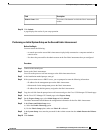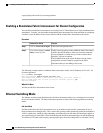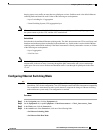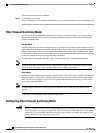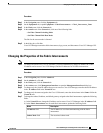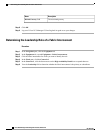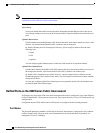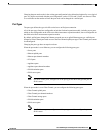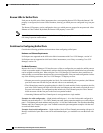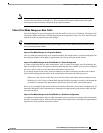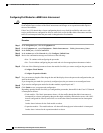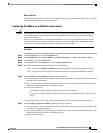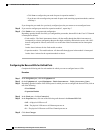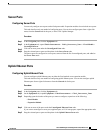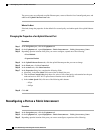
Changing the port mode results in the existing port configuration being deleted and replaced by a new logical
port. Any objects associated with that port configuration, such as VLANs and VSANS, are removed. There
is no restriction on the number of times the port mode can be changed for a unified port.
Port Types
The port type defines the type of traffic carried over a unified port connection.
All of the port types listed are configurable on both the fixed and expansion module, including server ports,
which are not configurable on the 6100 series fabric interconnect expansion module, but are configurable on
the 6200 series fabric interconnect expansion module.
By default, unified ports changed to Ethernet port mode are set to uplink Ethernet port type. unified ports
changed to Fibre Channel port mode are set to the Fibre Channel uplink port type. Fibre Channel ports cannot
be unconfigured.
Changing the port type does not require a reboot.
When the port mode is set to Ethernet, you can configure the following port types:
• Server ports
• Ethernet uplink ports
• Ethernet port channel members
• FCoE ports
• Appliance ports
• Appliance port channel members
• SPAN destination ports
• SPAN source ports
For SPAN source ports, configure one of the port types and then configure the port as
SPAN source.
Note
When the port mode is set to Fibre Channel, you can configure the following port types:
• Fibre Channel uplink ports
• Fibre Channel port channel members
• Fibre Channel storage ports
• SPAN destination ports
• SPAN source ports
For SPAN source ports, configure one of the port types and then configure the port as
SPAN source.
Note
Cisco UCS Manager GUI Configuration Guide, Release 2.0
OL-25712-04 79
Unified Ports on the 6200 Series Fabric Interconnect



